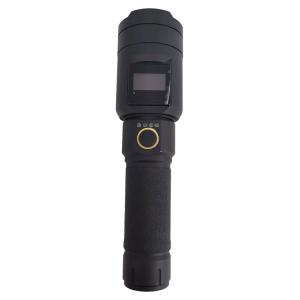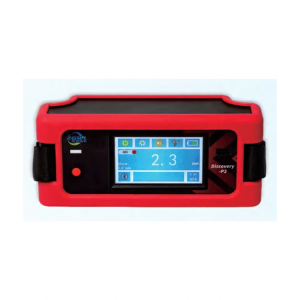- English
- Español
- Português
- русский
- Français
- 日本語
- Deutsch
- tiếng Việt
- Italiano
- Nederlands
- ภาษาไทย
- Polski
- 한국어
- Svenska
- magyar
- Malay
- বাংলা ভাষার
- Dansk
- Suomi
- हिन्दी
- Pilipino
- Türkçe
- Gaeilge
- العربية
- Indonesia
- Norsk
- تمل
- český
- ελληνικά
- український
- Javanese
- فارسی
- தமிழ்
- తెలుగు
- नेपाली
- Burmese
- български
- ລາວ
- Latine
- Қазақша
- Euskal
- Azərbaycan
- Slovenský jazyk
- Македонски
- Lietuvos
- Eesti Keel
- Română
- Slovenski
- मराठी
- Srpski језик
What is the significance of natural gas detectors in practical application scenarios?
2025-09-16
Natural gas leaks can occur deep within pipelines, in kitchen corners, or in gaps between industrial equipment. This colorless and odorless flammable gas, once accumulated, can trigger catastrophic explosions or fatal poisoning with just a single spark. Natural gas detectors have risen from simple detection tools to the cornerstone of safety in modern society in this context.

Industrial safety defense line:
In the complex pipeline network and storage tank areas of refineries, natural gas detectors form the first intelligent defense line. Through a distributed sensor array, it continuously "sniffs" for changes in methane concentrations as low as one part per million in the air, and can issue warnings at the earliest signs of minor leaks at valves or cracks in welds. A coastal LNG receiving station once successfully avoided a potential chain explosion that could have affected the entire dock area thanks to the gas detector's timely detection of a 0.5% LEL concentration anomaly in the pressurized pipeline. Especially in enclosed spaces such as compressor rooms, the design of the detector's with the ventilation system is even more crucial - when the concentration reaches 20% LEL, the system will forcibly activate explosion-proof fans to dilute the gas and automatically cut off the gas supply valve, providing a golden window period for emergency repairs.
Home Safety Guard:
In the vicinity of the stove used for cooking in the kitchen, and beneath the gas water heater installed on the enclosed balcony, these hidden risks are often overlooked. Natural gas detectors can be embedded in the ceiling or inside the cabinets. Their semiconductor sensors are thousands of times more sensitive to gas than human olfaction. When an elderly person forgets to turn off the stove and causes a slow gas leak, or when the exhaust pipe of the water heater is blocked by bird nests, the detector will trigger a 90-decibel beeping alarm when the gas concentration reaches 5% LEL. It will also send a location alert to the bound mobile phone via the Internet. Statistics from a certain city in northern China in the winter of 2023 showed that the rate of gas accidents in households with installed detectors was 76% lower than that in households without them, especially avoiding multiple cases of asphyxiation during sleep at night.

Urban Safety Monitoring:
The urban underground gas pipeline network stretches for hundreds of kilometers. Natural gas detectors are extremely important here. They are inspected by a vehicle-mounted laser methane remote sensing system while the vehicle travels at a speed of 40 kilometers per hour along the road. When the vehicle passes over the road, the laser beam emitted from the roof can penetrate the asphalt surface and accurately identify the methane plume with a concentration of 0.1 ppm around the pipeline 3 meters underground. More advanced technology employs solar-powered Internet of Things probes, which are implanted like dandelion seeds in valve wells and crossing sections and transmit real-time data on pressure fluctuations and gas concentrations. In a certain megacity, through this system, a warning was issued 12 hours before the pipeline suspension was caused by heavy rain, effectively preventing the ground collapse accident in the entire block.
Public Safety Guarding:
The natural gas detector plays the role of a "group guardian" in public places. Its explosion-proof design can withstand the high-temperature oil fumes in kitchens, and its multi-probe layout can cover the three-dimensional space from the ceiling to the floor. During the accident investigation at a barbecue restaurant in South Korea, it was found that the store without the detector reached the explosion concentration 3 minutes after the gas hose fell off, while the store equipped with a联动 cutting device automatically shut off the valve within 15 seconds, controlling the leakage within the safety threshold. The central monitoring platform of large supermarkets can simultaneously receive real-time data from hundreds of detection terminals, achieving visualized risk management.
| Application Area | Core Function | Key Impact |
|---|---|---|
| Industrial Safety | Continuous ppm level leak detection | Prevents catastrophic chain reactions |
| Residential Protection | High sensitivity semiconductor sensors | Reduces home accidents by 76 percent |
| Urban Infrastructure | Laser methane scanning underground pipelines | Early warning prevents urban collapses |
| Public Spaces | Explosion proof multi probe monitoring | 15 second automatic shutoff limits explosions |
| Integrated Systems | IoT real time data transmission | Enables centralized risk visualization |







